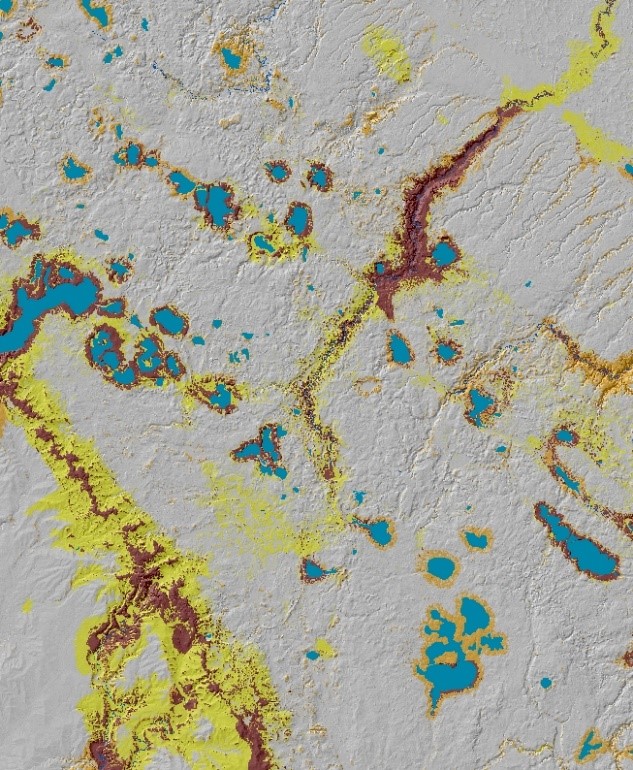MnModel Phase 4 Results
MnModel Phase 4 exceeded expectations on several measures. Most important, Phase 4 models are more accurate than Phase 3 models in the following ways:
- They predict a higher proportion of known archaeological sites
- They classify a smaller portion of the state as high site potential.
- They are much less likely to classify non-sites as sites.
MnModel Phase 3 sought to predict 85 percent of modeled archaeological sites while having 33 percent or less of Minnesota's area classified as high site potential. Phase 3 models were actually able to predict 85 percent of sites with only 23 percent of the state categorized as high site potential. Phase 4 models predict 95 percent of modeled archaeological sites with only 13 percent of the state classified as high site potential.
Comparison of Phase 3 and Phase 4 Models
![]() Unknown Site Potential/Poorly Surveyed
Unknown Site Potential/Poorly Surveyed
Low Site Potential/Well Surveyed
High Site Potential/Poorly Surveyed
High Site Potential/Well Surveyed
 Phase 3 Survey Implementation Model
Phase 3 Survey Implementation Model Phase 4 Survey Implementation Model
Phase 4 Survey Implementation Model
More accurate models provide Culture Resource professionals with a higher degree of confidence in the models, reduce the number of surveys required, and reduce the potential of finding sites during construction that were not predicted by the model.
One goal of Phase 4 was not met, however. Having a much larger sample of surveyed places incorporated into the model actually increased the portion of the map classified as ‘unknown’. From this result we can only conclude that the majority of archaeological surveys in the state are indeed non-random. Since an estimated five to fifteen percent of undiscovered sites are found in ‘unknown’ and ‘low probability’ areas, archaeologists are encouraged to make a point of surveying these places, even though they may not be the areas where they typically expect to find sites.
